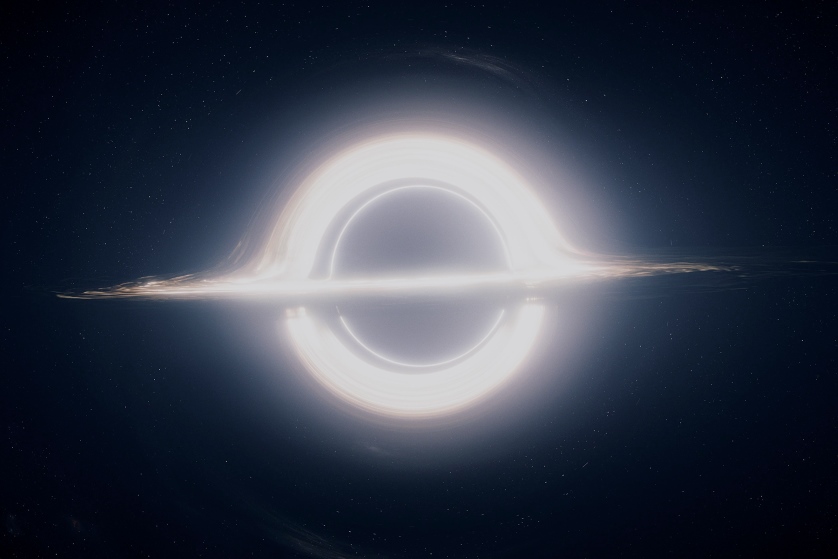Christopher Nolan strives for film perfection and this time it led to a breakthrough scientific discovery!
Christopher Nolan is a director that puts everything into his films. In order to fully engage an audience, he continually breaks down the barriers that separate film from reality. He does this by meticulously detailing the real world applicability of the most unreal situations. When the scientific reality of “Interstellar” came into question Christopher Nolan brought on Astrophysicist Kip Thorne to create an accurate depiction of interstellar travel. While the film’s visuals came together in the expected “Nolanesque” fashion, the unexpected discovery regarding the science of black holes was astounding.
The visual effects that we see in the trailers (and will see in the film) are definitely mezmerizing but many won’t realize that the black hole and other visuals are an extremely accurate depiction. Black holes form from collapsed stars and because of the amount of gravity they produce they actually bend the fabric of the universe itself. They bend light, space, and even time so the closer an object is to a black hole, the time relative to that object would move faster.
When Nolan sent his visual effects supervisor Paul Franklin to collaborate with Kip Thorne, the end result was what you see in the image above. The black hole spinning with a beautiful white halo surrounding it is the result of 100 hours of rendering and 800 terabytes of data. With Thorne’s mathematical equations and Franklin’s visual effects knowledge they created a visual map for a black hole that no other filmmaker or even astrophysicist had portrayed as accurately. From their calculations and Chris’ emphasis on making the black hole “spherical,” their final product astounded Nolan’s entire visual effects team and even Kip Thorne himself.
The team attempted to use a technique called ray tracing to render light and reflections in images but that process had its limitations since light travels along straight paths.
But ray-tracing software makes the generally reasonable assumption that light is traveling along straight paths,”
– CG Supervisor Eugénie von Tunzelmann
With Nolan’s need for a “spherical” representation, Franklin began to think that the final result would look more like a disk than a sphere. Because of this it was apparent that the only thing that would be seen from a black hole would be “the way that it warps starlight.” This led Franklin to studying about accretion disks which are agglomerations of matter that orbit some black holes aka waste matter. Since he couldn’t represent the black hole visually, he figured that he could use orbiting matter to define the spherical properties of the black hole. When the CG Supervisor Eugénie von Tunzelmann generated a demo of the accretion disk to be positioned around the black hole, the end result was something similar to the rings of Saturn which they attributed to being a bug in the renderer.
“We found that warping space around the black hole also warps the accretion disk,” Franklin says. “So rather than looking like Saturn’s rings around a black sphere, the light creates this extraordinary halo.”
– Paul Franklin
The final product is what led Astrophysicist Kip Thorne to an astounding moment of enlightenment. He realized that the final product was not a bug in the renderer, but one of the most accurate depictions of a black hole that anyone had ever seen.
This is our observational data,” he says of the movie’s visualizations. “That’s the way nature behaves. Period.”
– Kip Thorne
Thorne and other astrophysicists have had this image in their head when describing black holes and wormholes but for many, this was an image far beyond what anyone could accurately visualize. Leave it to Christopher Nolan and his team to create a sci-fi film that is also visually educational.
Kip Thorne expects to have two published articles out of his work on the film and I’m sure that we can expect some sort of recognition for Christopher Nolan as well. This is why Christopher Nolan has been my favorite director for so long. He strives for perfection and ways to better himself. In doing so he creates revolutionary films which in this case led to a revolutionary discovery. If this doesn’t give “Interstellar” some sort of Oscar recognition then I don’t know what will. I cannot wait for this film!!! In Nolan We Trust.
Please check out the full article over at Wired.com




